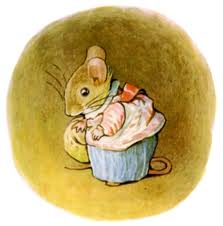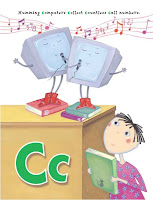In my last post I mused about what an eBook actually is. Warren Buckleitner has some ideas on the topic. This article was published in 2011, and is based on data collected between April and December of 2010, which means the information is obsolete now, given how fast eBook technology is changing. Let's take a look anyway, just for kicks.
This peer-reviewed article gives a snapshot of eBooks for kids. It includes an eBook Glossary of Terms and a (little too much) history about eBooks.
The author makes a distinction between eReaders and Animated Stories. This is confusing for me because I think of eReaders as being the device upon which you view an eBook, but I do see what he's getting at. Many of the eBooks we've read are basically just digitized versions of a print book with some minor animation, highlighted text and audio. Here's what he says the differences are:
eReaders
Less interactive
Easier to adapt from a print book
A PDF file is the most common and least interactive examples of an eReader.
Features might include:
• Font control (color, shape & size)
• Navigation helpers (tilt, page swiping, screen rotation)
• Word search features (ability to type a word, and jump to the word).
• Minimal frosting (e.g., hidden animations, popups or activities)
• Cut and copy to your clipboard.
• Hyperlinks, both internal and external.
• Decoding helpers (narration, word highlighting, pronunciation, language toggling and/or translation).
Animated Stories
More interactive
Many offer two modes: Read to Me (narrated text) or Read it Myself (just text).
The author claims that the interactivity in animated stories is based on Apple's 8 pillars of the iPad:
1. A large multi-touch screen that can register multiple fingers at once, as well as how hard the fingers are pushing and in what direction
2. Motion detection in the form of a tilt or a shake
3. Microphone captures your voice for story narration
4. Cameras that can be used for scanning bar codes or seeing pictures
5. Speakers
6. Long lasting batteries and enough internal memory to store hundreds of apps
7. Internet access that is fast, free (if you are in a Wi-Fi zone) and smart
8. Apps
What I found most interesting about this article was the author's analysis of the various interactivity techniques commonly used in animated stories (hot spots, hunt and find, motion based input and motion tabs). In the "academic disclaimer" at the beginning of the article, Buckleitner states that "the definition of 'literacy' goes beyond decoding and encoding," and goes on to describe how this new fangled medium is not just entertainment, but rather an important pedagogical and diagnostic tool in literacy and language education. The multimedia environment provided by eBooks (animated stories, potato, potahto) can not only support traditional literacy development through the use of built-in dictionaries, language toggles, highlighting or sound-it-out functions; but also the development of what we now call multiliteracy, or media literacy. But that's a whole other discussion.
Buckleitner, W. (2011). THE CHILDREN'S EBOOK REVISITED. Children's Technology Review, 19(1), 6.




























